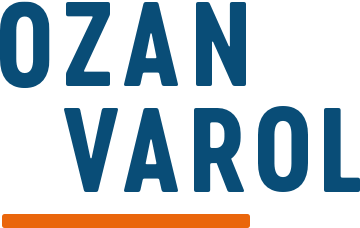During my time in academia, I was amazed by how much the U.S. News & World Report rankings influence decisions for both students and faculty.
The Report, as you might know, ranks colleges and other degree programs in the United States. The rankings rely on a formula to determine which schools are better than others.
If the most important thing about a college is educational quality, then the Report is deeply flawed. Schools are ranked based on factors—like acceptance rate, faculty compensation, and average alumni donation rate—that have little to do with educational quality. The rankings don’t measure if the students are actually learning anything or if they’re otherwise satisfied with their educational experience.
For students, the rankings become an easy way to outsource their thinking. Many of them make one of the most expensive investments in their life based on rankings that tell them very little. Instead of thinking through what program is the best fit for them, they let the rankings decide.
Schools then game the system to get a higher spot. They reverse engineer the formulas and attempt to move the needle on the metrics that boost their ranking—instead of focusing their energy to increase educational quality. They add faculty members they don’t need. They lower admissions standards for transfer applications who don’t count toward the rankings. They pour a ton of money into admissions recruiting to increase applications just so they can reject more students and decrease their acceptance rate.
Those who can’t game the system try to cheat it. Numerous schools—including reputable institutions like George Washington and Emory—were caught misreporting data in an attempt to move to the top.
There’s a famous saying attributed to Peter Drucker: “What gets measured gets managed.” The principle makes sense on the surface. It’s only when you quantify outcomes that you can begin to see how your actions move (or don’t) move the needle.
But if you’re not careful, measurement can replace thinking. It can become the thing.
Businesses often take their hands off the wheel and hand control over to a set of numbers. And even when they veer off the road—when the numbers lead them astray—they keep driving because they’re trained to myopically measure miles-per-hour, and not lift their gaze to see if the car is taking them where they want to go.
Wells Fargo fell into this trap. They put their employees under immense pressure to sell additional financial products to existing customers. The only way to meet impossible quotas was to defraud the system and fake new accounts. Wells Fargo employees “opened more than 1.5 million deposit accounts and more than 565,000 credit-card accounts that may not have been authorized.” The company had to pay $480 million to settle a class-action lawsuit for securities fraud.
The Wells Fargo scandal is an example of Goodhart’s Law at work: “When a measure becomes a target, it ceases to be a good measure.” When we’re too focused on what we measure, we can lose sight of everything else—including common sense.
Individuals also fall into this trap. We focus on collecting what we can measure—Instagram followers and impressive job titles—forgetting that those vanity metrics rarely move the needle on what matters.
Be careful what you measure.
Periodically ask yourself, “What is this metric for?” and “Are we measuring the right thing?”
Because the metric isn’t an end in itself. It’s a means to an end.
And if it’s no longer serving that end, it’s time to get rid of it and replace it with something better.
P.S. If your business is using the same metrics, and no longer getting the outcomes you need, it might be time to adjust your approach.
My wife Kathy is an expert at driving profit with purpose. She created the Global Purpose (CSR) Strategy for adidas, a $22 billion company, encompassing everything adidas does to positively impact People and Planet. Now Kathy helps her clients use purpose to stand out in a competitive environment, attract the best talent, gain consumer loyalty, and fully harness the innovative brain power of their employees. She’s a sought-after speaker, purpose strategy expert, and CSR & ESG consultant who has spoken and facilitated workshops around the globe.
You can watch this short video to learn more about her consulting and speaking. If you’re interested in working with her, submit an inquiry by clicking on “act now” at this link.




